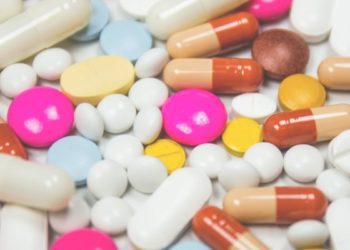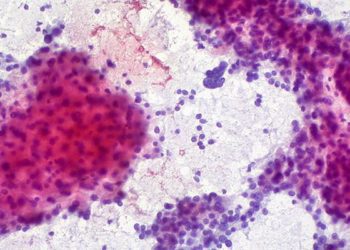Glucose, but not fructose, reduces cerebral blood flow in appetite and reward centers of brain
Jan 11th – Glucose intake increased the degree of satiety and fullness, which also correlated with reduced hypothalamic blood flow.
 [tabs tab1=”2MM Rundown” tab2= “2MM Full Report” tab3=”About the Authors”]
[tabs tab1=”2MM Rundown” tab2= “2MM Full Report” tab3=”About the Authors”]
[tab]
Image: PD
1. Glucose intake increased the degree of satiety and fullness, which also correlated with reduced hypothalamic blood flow.
2. Fructose did not reduce hypothalamic blood flow and transiently increased hypothalamic activity while perhaps increasing the drive for food.
This study links post-prandial changes in human objective physiologic measurements to food-seeking and reward behavioral responses. With fMRI imaging, the areas of the brain involved in interpreting the body’s metabolic state–namely the hypothalamus and its network–including striatum, orbitofrontal cortex, amygdala, and insula demonstrate decreased blood flow in response to glucose ingestion. Fructose ingestion did not cause such attenuation. Rather, it notably caused a transient increase in hypothalamic activity. This study is exploratory in nature, as fMRI demonstrates regional blood flow changes and cannot target specific neuronal or synaptic activity. While many of the obesogenic properties of fructose are well-characterized, the clinical implications of regional cerebral blood flow changes are still unclear. These preliminary results are from a small sample of twenty healthy volunteers, and future research will be required to further characterize the clinical significance of the observed changes of regional cerebral blood flow.
Click to read the study in JAMA
Click here to read the accompanying editorial in JAMA
[/tab]
[tab]
Image: PD
1. Glucose intake increased the degree of satiety and fullness, which also correlated with reduced hypothalamic blood flow.
2. Fructose did not reduce hypothalamic blood flow and transiently increased hypothalamic activity while perhaps increasing the drive for food.
Primer: Obesity, defined in adults as a body mass index equal to or above 30kg/m2, represents a chronic disease that has been rapidly increasing in prevalence throughout the world over the past 20 years. The lifetime risk of obesity in the US has been estimated to be 25%. It is associated with significantly increased all-cause mortality, with notable increases in the risk for diabetes, cardiovascular disease, and countless other diseases. Obesity is intimately connected not only to total caloric intake but also the proportion of macronutrient compounds consumed. Western dietary trends have favored an increased use of fructose as a sweetener. Though fructose is a monosaccharide structurally similar to glucose, it is much sweeter and is initially processed in a completely different metabolic pathway by the body. Whereas glucose stimulates immediate insulin release, fructose largely bypasses this mechanism. Such a difference may be important as insulin has central nervous system effects that promote satiety and decrease reward activity for food. Furthermore, fructose attenuates the release of certain satiety hormones, and it has been speculated that it may even stimulate a food-seeking drive. Given that the hypothalamus and related cerebral structures are thought to regulate the food-seeking drive, the present study compares changes in blood flow to these areas after glucose vs. fructose ingestion.
Background reading:
- UpToDate: Screening and evaluation of obesity in adults
- Estimated risks for developing obesity in the Framingham Heart Study
- Dietary Fructose: Implications for Dysregulation of Energy Homeostasis and Lipid/Carbohydrate Metabolism
- Differential effects of central fructose and glucose on hypothalamic malonyl-CoA and food intake
This [prospective, randomized crossover ] study: This study included 20 healthy volunteers who underwent two functional magnetic resonance imaging (fMRI) sessions after the intake of a fructose or glucose drink in a blinded, randomized manner. Blood samples were obtained at ten minute intervals to measure plasma glucose, lactate, insulin, leptin, ghrelin, peptide YY, GLP-1. Subjective feelings of hunger, fullness and satiety levels were also recorded.
Glucose significantly reduced hypothalamic cerebral blood flow within 15 minutes, which was markedly different from fructose where an increase was seen. Glucose ingestion showed a resulting increase in plasma glucose, insulin and GLP-1 when compared with fructose. From the behavioral survey, glucose intake led to increased reports of satiety.
In sum: This study links post-prandial changes in human objective physiologic measurements to food-seeking and reward behavioral responses. With fMRI imaging, the areas of the brain involved in interpreting the body’s metabolic state–namely the hypothalamus and its network–including striatum, orbitofrontal cortex, amygdala, and insula demonstrate decreased blood flow in response to glucose ingestion. Fructose ingestion did not cause such attenuation. Rather, it notably caused a transient increase in hypothalamic activity. This study is exploratory in nature, as fMRI demonstrates regional blood flow changes and cannot target specific neuronal or synaptic activity. While many of the obesogenic properties of fructose are well-characterized, the clinical implications of regional cerebral blood flow changes are still unclear. These preliminary results are from a small sample of twenty healthy volunteers, and future research will be required to further characterize the clinical significance of the observed changes of regional cerebral blood flow.
Click to read the study in JAMA
Click here to read the accompanying editorial in JAMA
By [MCH] and [RR]
© 2013 2minutemedicine.com. All rights reserved. No works may be reproduced without written consent from 2minutemedicine.com. Disclaimer: We present factual information directly from peer reviewed medical journals. No post should be construed as medical advice and is not intended as such by the authors or by 2minutemedicine.com. PLEASE SEE A HEALTHCARE PROVIDER IN YOUR AREA IF YOU SEEK MEDICAL ADVICE OF ANY SORT. Content is produced in accordance with fair use copyrights solely and strictly for the purpose of teaching, news and criticism. No benefit, monetary or otherwise, is realized by any participants or the owner of this domain.
[/tab]
[tab]
 Mike Hoaglin: Mike is a currently a 4th year M.D. Candidate at the University of Pennsylvania.
Mike Hoaglin: Mike is a currently a 4th year M.D. Candidate at the University of Pennsylvania.
 Rif Rahman: Rif is a 4th year M.D. candidate at Harvard Medical School.
Rif Rahman: Rif is a 4th year M.D. candidate at Harvard Medical School.
[/tab]
[/tabs]




